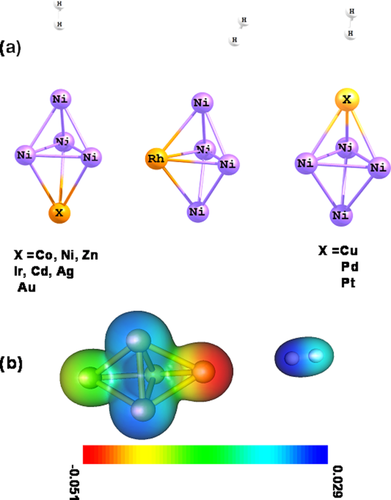A Theoretical Study of the Effects of Transition Metal Dopants on the Adsorption and Dissociation of Hydrogen on Nickel Clusters
슈퍼관리자
2021-05-21
A Theoretical Study of the Effects of Transition Metal Dopants on the Adsorption and Dissociation of Hydrogen on Nickel Clusters
-
Authors :
N. S. Venkataramanan, A. Suvitha, H. Mizuseki, and Y. Kawazoe
-
Journal :
Int. J. Quantum Chem.
-
Vol :
113
-
Page :
1940-1948
-
Year :
2013

Abstract
The structure, stability, adsorption, and dissociation of H2 on nickel clusters doped with late transition metals were investigated using density functional theory with the BP86 functional. Molecular hydrogen physisorption occurred at a vertex atom with a low coordination number. Charge transfer between clusters and the H2 molecule stabilized the physisorption. The chemisorption of H2 occurred at the bridge sites, without any structural or spin change of the clusters. Among the pentamer clusters, Cd, Zn, and Au had the lowest chemisorption energies, while Ir and Pt had higher chemisorption energies for hydrogen. The computed reaction energies and activation barriers for the dissociation mechanism showed that dopants such as Rh, Pd, Pt, and Au have endothermic reaction energies and low activation barriers. This facilitates the reversible adsorption/dissociation of the H2 molecule on these metal-doped clusters. The dopant atoms play a major role in modulating the physisorption, chemisorption, and dissociation mechanism of H2 on nickel clusters.















